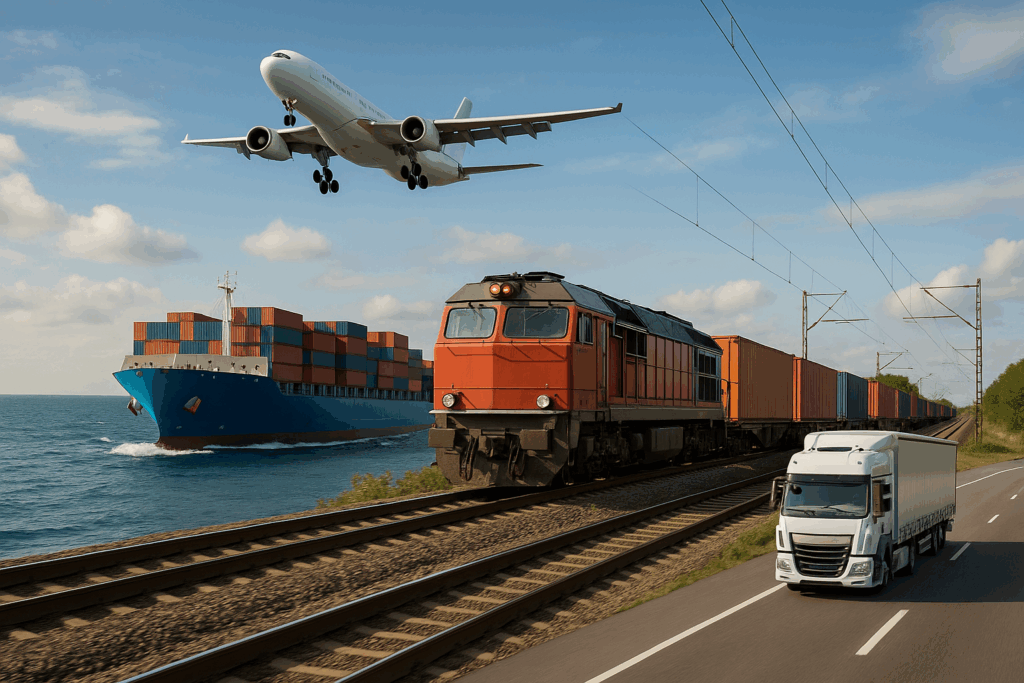British seaports are essential hubs for the United Kingdom’s economy, handling millions of tonnes of cargo, ferry passengers, and cruise travelers every year. Their strategic locations along the UK’s coastline connect the country with Europe, Asia, the Americas, and beyond. From container handling to energy imports and fishing, British seaports serve as gateways for both domestic and international trade — with a significant share of goods arriving from China, one of the UK’s largest trading partners.
1. Overview of British Seaports
The UK is home to over 120 commercial ports, managed by a mix of private companies, trust ports, and local authorities.
Key types include:
- Container Ports – Specializing in containerized freight.
- Ferry Ports – Handling passenger and vehicle traffic.
- Bulk Cargo Ports – Serving industries like coal, grain, and oil.
- Fishing Ports – Supporting the seafood industry.
2. Major British Seaports and Their Specializations
| Seaport | Location | Specialization | Annual Throughput |
|---|---|---|---|
| Port of Felixstowe | Suffolk | Container shipping | ~4 million TEU |
| Port of Southampton | Hampshire | Container & cruise | 1.9 million TEU + major cruise hub |
| Port of London | Thames Estuary | Mixed cargo, bulk goods | 53 million tonnes |
| Port of Dover | Kent | Passenger ferries & Ro-Ro freight | 11 million passengers |
| Port of Liverpool | Merseyside | Container & bulk | 33 million tonnes |
| Teesport | North East England | Bulk chemicals, energy | 40 million tonnes |
3. Role in UK Trade and Transport
British seaports facilitate over 95% of the UK’s international trade by volume. They are vital for:
- Importing raw materials such as oil, timber, and metals.
- Exporting manufactured goods like cars, machinery, and food products.
- Passenger transport via ferries and cruise ships.
- Energy supply through LNG and oil terminals.
4. Shipping from China to UK Seaports
China is the UK’s largest import partner outside Europe, and British seaports handle vast volumes of Chinese goods ranging from consumer electronics and clothing to machinery and raw materials.
Common Shipping Routes & Transit Times
- Direct Sea Freight – Container ships sail from Chinese ports such as Shanghai, Ningbo, Shenzhen, and Qingdao to UK ports, typically taking 25–40 days.
- Rail-Sea Hybrid – Containers are moved by rail to Europe via the China-Europe Railway and then shipped to UK ports, cutting transit times to around 18–25 days.
- Air-Sea Combination – Urgent shipments are flown into European hubs and trucked or ferried to UK ports.
Key UK Ports for Chinese Imports
- Port of Felixstowe – Handles the majority of direct containerized imports from China.
- Port of Southampton – Serves high-value and time-sensitive goods.
- Port of Liverpool – Ideal for distributing imports to Northern England and Scotland.
Importer Tips:
- Plan shipments around Chinese New Year and peak holiday seasons to avoid delays.
- Choose Incoterms wisely (FOB, CIF, DDP) to define cost and risk responsibilities.
- Ensure accurate documentation for customs clearance, including HS codes, packing lists, and certificates of origin.
5. Transportation Links to British Seaports
Efficient connectivity ensures smooth cargo and passenger flows:
- Road Transport – Motorways link major ports to industrial centers.
- Rail Freight – Container trains serve ports like Felixstowe and Southampton.
- Inland Waterways – The Port of London uses the River Thames for barge transport.
- Air–Sea Integration – Coordinated logistics with airports for time-sensitive cargo.

6. Services and Facilities Available at British Seaports
Modern British seaports provide:
- Advanced container handling equipment.
- Customs clearance zones for import/export.
- Cold storage for perishable goods.
- Ro-Ro ramps for vehicles.
- Passenger terminals with modern amenities.
7. Challenges and Opportunities
While British seaports are highly advanced, they face challenges such as port congestion, environmental regulations, and post-Brexit customs procedures. Opportunities include:
- Expanding green port initiatives with renewable energy use.
- Developing digital port management systems.
- Increasing capacity for larger container vessels.
8. Future Developments in British Seaports
Investments are underway to modernize UK ports:
- Freeports scheme to boost trade and attract investment.
- Automation and AI for faster cargo handling.
- Sustainability projects to reduce carbon emissions.
9.Conclusion
British seaports are vital to the UK’s economy, handling most international trade and connecting the nation to global markets. Strong links with China ensure a steady flow of goods, making ports like Felixstowe, Southampton, and Liverpool key entry points for imports. Ongoing investments in technology and sustainability will keep these gateways efficient and competitive.
- Consult TJ China Freight Forwarding for the lowest quote. They will provide you with reliable, cost-effective service.
FAQ:
Q1.Which is the busiest seaport in the UK?
The Port of Felixstowe is the busiest container port, handling nearly half of the UK’s containerized trade.
Q2.Do British seaports handle cruise ships?
Yes. Ports like Southampton and Liverpool are major cruise hubs.
Q3.How are British seaports managed?
They are operated by private companies, trust ports, or local authorities.
Q4.What is a Freeport?
A Freeport is a designated area where goods can be imported, stored, and exported with simplified customs rules and tax benefits.
Q5.How do British seaports support the fishing industry?
Fishing ports like Peterhead provide landing, processing, and distribution facilities for seafood.
